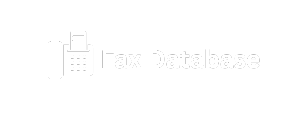In the dynamic world of business, reaching your target audience is paramount. For decades, traditional marketing reigned supreme, relying on tangible media like print, television, and radio. However, the advent of the internet has ushered in a new era, giving rise to digital marketing with its online channels and data-driven strategies. While both approaches aim to promote products or services, their methodologies, reach, and measurability differ significantly, prompting businesses to carefully consider their optimal marketing mix in today’s interconnected world.
Understanding Traditional Marketing’s Enduring Appeal
Traditional marketing encompasses all promotional efforts that happen offline. This includes classic methods such as newspaper and magazine advertisements, television commercials, radio spots, direct mail, billboards, and even telemarketing. Its enduring appeal lies in its ability to connect iceland phone number list with local audiences and build a sense of familiarity and credibility. For instance, a local business might find immense success with a well-placed advertisement in a community newspaper or a sponsorship on a local radio station, fostering trust and direct engagement within their immediate geographic area. These tangible forms of marketing can often create a lasting impression and are particularly effective for reaching demographics less active online.
The Rise and Reach of Digital Marketing
Digital marketing, in contrast, leverages the internet and electronic devices to connect with potential customers. This vast landscape includes search engine optimization (SEO), social media marketing, email marketing, content marketing, pay-per-click (PPC) advertising, and website design. The primary advantages of digital marketing lie in its unparalleled reach, precise targeting capabilities, and immediate never lose your email data again measurability. Businesses can connect with a global audience, segment their customers based on intricate demographics and behaviors, and track the real-time performance of their campaigns with granular data. This allows for rapid adjustments and optimization, maximizing return on investment.
Key Differentiators: From Cost to Conversion
The disparities between traditional and digital marketing extend beyond their mediums. Digital marketing generally offers more cost-effective solutions, allowing businesses, particularly small and medium-sized enterprises, to initiate campaigns with smaller budgets and scale as results dictate. Unlike traditional methods, where measuring direct impact can be challenging, digital marketing provides robust b2b phone list analytics tools to track website traffic, conversion rates, and engagement metrics, offering clear insights into campaign effectiveness. Furthermore, digital platforms facilitate two-way communication, enabling businesses to engage with customers directly, gather feedback, and build stronger relationships, a level of interactivity often absent in traditional marketing’s one-way communication model. While traditional marketing still holds value for brand building and local reach, digital marketing’s flexibility, precise targeting, and measurable results make it an indispensable component of any comprehensive modern marketing strategy.
